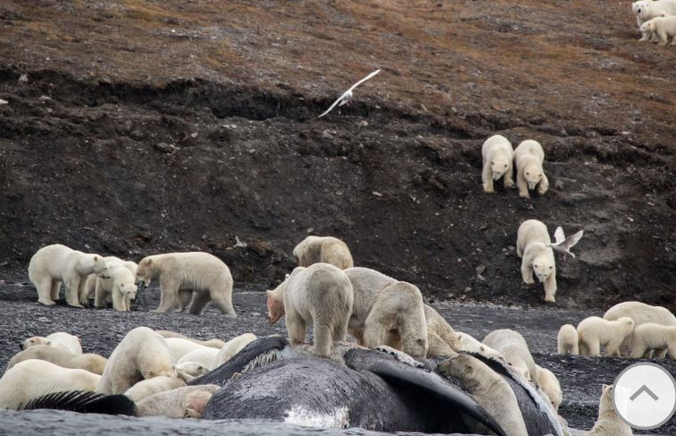Polar bears crowd on Russian island in sign of Arctic change
MOSCOW (AFP) - A boatload of tourists in the far eastern Russian Arctic thought they were seeing clumps of ice on the shore, before the jaw-dropping realisation that some 200 polar bears were roaming on the mountain slope.
"It was a completely unique situation," said Alexander Gruzdev, director of the Wrangel Island nature reserve where the encounter in September happened. "We were all gobsmacked, to be honest."
The bears had come to feast on the carcass of a bowhead whale that washed ashore, later resting around the food source. The crowd included many families, including two mothers trailed by a rare four cubs each, Gruzdev told AFP.
Climate change means ice, where polar bears are most at home, is melting earlier in the year and so polar bears have to spend longer on land, scientists say.
This might wow tourists but means the bears, more crammed together on coasts and islands, will eventually face greater competition for the little food there is on land.
Locals are also at risk from hungry animals venturing into villages.
Wrangel Island, off the coast of Russia's Chukotka in the northeast, is where polar bears rest after ice melts in early-August until November, when they can leave land to hunt for seals.
It is also considered the birthing centre for the species, with the highest density of maternity dens in the entire Arctic, Gruzdev said.
"A whale is a real gift for them," he said. "An adult whale is several tens of tonnes" that many bears can feed on for several months.
Studies have shown that, compared with 20 years ago, polar bears now spend on average a month longer on Wrangel Island because "ice is melting earlier and the ice-free period is longer," said Eric Regehr, from the University of Washington, the lead American scientist on the US-Russian collaborative study of Wrangel Island polar bears.
Changing ice conditions could also be responsible for the increasing number of bears flocking there, Regehr said.
This autumn, the number of bears observed was 589, far exceeding previous estimates of 200-300, he said, calling it "anomalously high".
The International Union for Conservation of Nature estimates there are about 26,000 polar bears in the Arctic, with a long-term "potential for large reductions" due to ice loss.
Ice is key as polar bears hunt exclusively on the ice surface, often staking out seals by their breathing holes.